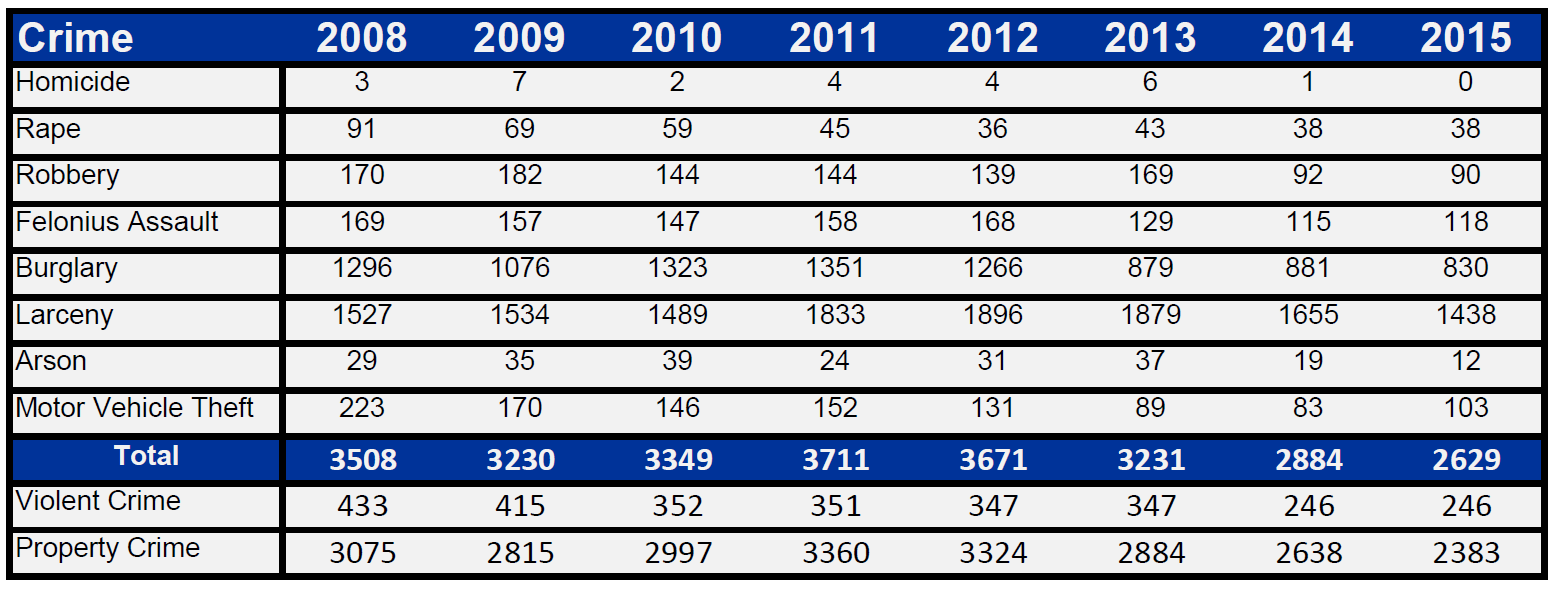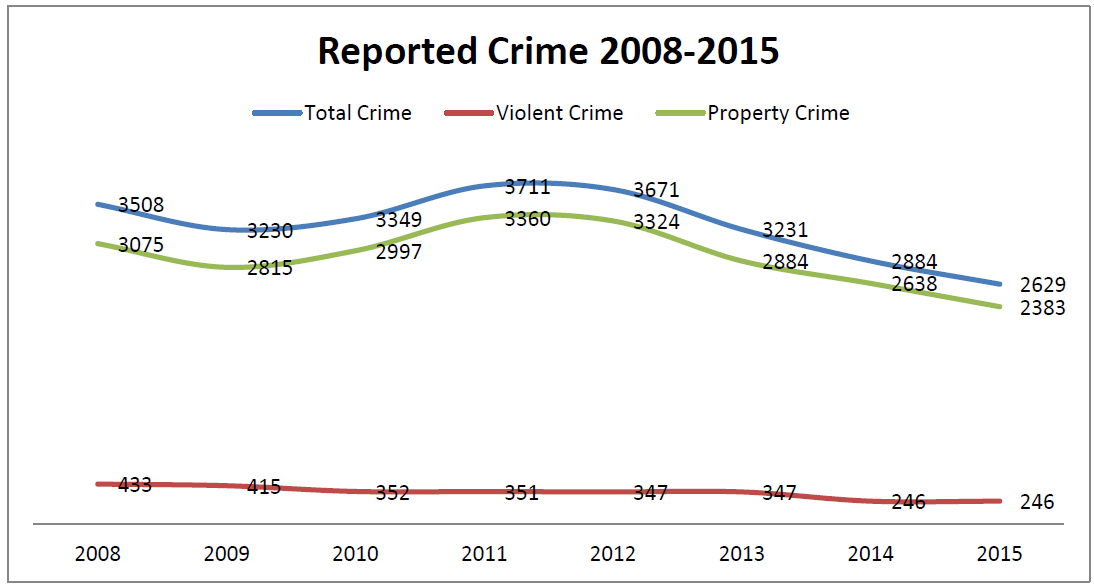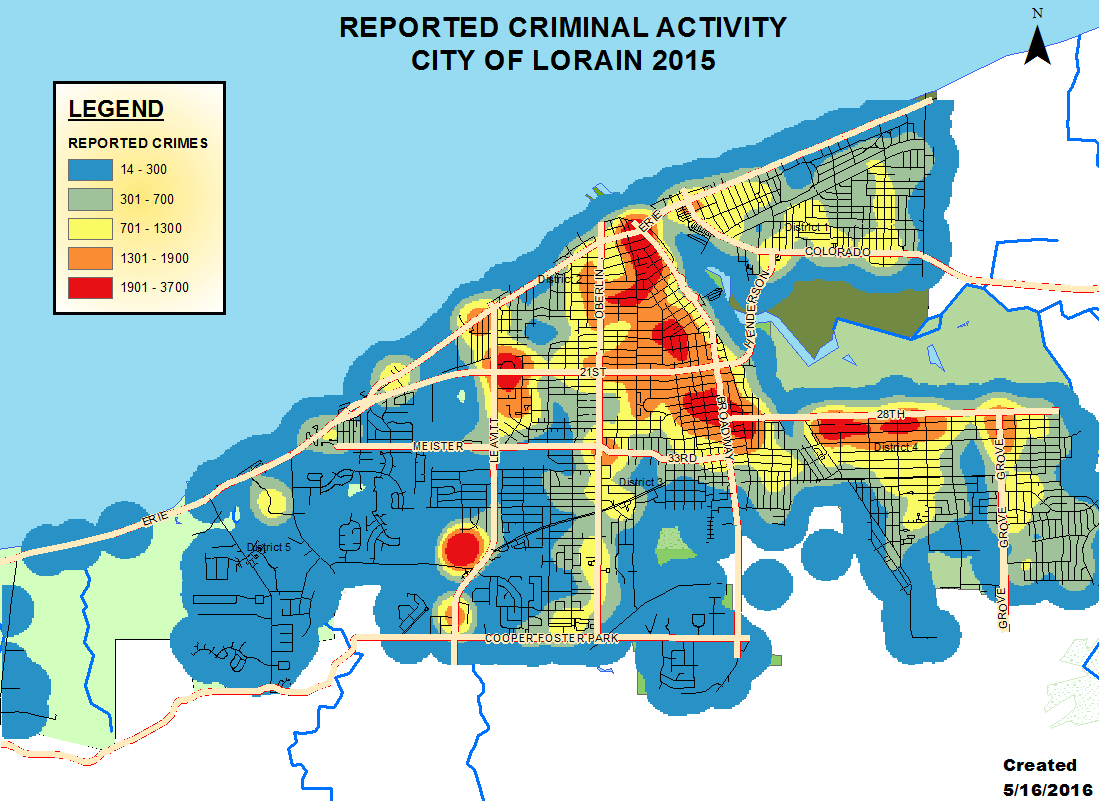The following information reflects only crimes that are categorized as Part I Crimes by the FBI’s Uniform Crime Report. By the FBI’s definition, Part I Crimes include homicide, rape, robbery, aggravated assault, burglary, larceny, motor vehicle theft, and arson. The numbers reported here reflect the official Part I Crime numbers reported to the FBI and exclude cases that have been unfounded.
In 2015, Lorain had 2,629 reported Part I crimes, a 8.8% decrease from 2014 (2,884). More specifically, violent crime (comprised of homicide, rape, robbery, and aggravated assault) remained statistically the same while property crime (comprised of burglary, larceny, motor vehicle theft, and arson) decreased by approximately 9.7% from 2014 to 2015.



